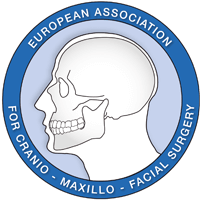Other treatment methods
(These forms of therapy are not used in Professor Sailer’s clinic, as they do not cure sleep apnoea)
Laser and radio frequency applications and other operations
Widely used and, in part, outdated treatment methods include laser and radio frequency applications and operations on the pharyngeal uvula, base of the tongue and palatal arch. These operations are intended to alleviate sleep apnoea by tightening or removing tissue in the mouth and throat area.
However, these regions are highly sensitive and flexible and they are constantly moving as we speak, swallow, chew and breathe. Procedures which affect these functional soft tissues are particularly painful. Surgical techniques of this sort can also cause functional impairments such as speech problems, nasal pitch and escape of fluid through the nose (when swallowing). As a matter of principle, Professor Sailer therefore rejects surgical procedures of this sort. He performs procedures several times a year to repair the damage caused by laser and radio frequency operations.
Moreover, the prognoses for operations of this sort appear extremely dubious in cases of sleep apnoea. The success of the treatment is often short-lived and these sorts of operations sometimes have to be repeated when the tissue tension relaxes.
“Mandibular advancement devices and snore guards”
Many patients attempt to get their sleep apnoea under control by wearing so-called snore guards. When in use, mandibular advancement devices shift your lower jaw forward a little and thereby slightly widen the upper respiratory tract which has become narrow. Wearing them over an extended period is not recommended because they dislocate the mandibular condyles and cause joint and disc damage and permanent displacement of teeth. These mandibular advancement devices are therefore used in Professor Sailer’s clinic only for short periods as a diagnostic tool.
“Electrostimulation of the upper airways”
For around ten years, there have been attempts to cure obstructive sleep apnoea (OSA) through “transcutaneous electrostimulation” (transcutaneous: through the skin). In this procedure, one electrode is placed under the chin and the other in the mouth. Treatment must be administered twice a day for around 30 minutes each time while the patient is awake. The electrostimulation therapy does not have any side effects, but can only provide a little alleviation for minor sleep apnoea. This method has only very limited success for moderate to severe sleep apnoea. So far, no statistical significance has been shown for the efficacy of this treatment.
“Positional therapy, prevention of supine position”
To prevent themselves from lying on their back when sleeping, some sleep apnoea sufferers sew a tennis ball into the back of their pyjamas. Commercial, inflatable vests that prevent sleeping in the supine position (similar to reverse life jackets) are also available on the market. Practice shows that such aids can only treat loud, irregular snoring to a limited degree and do not treat sleep apnoea at all. Such approaches are generally not advisable.
“Alternative therapies”
Some people advocate strengthening the musculature of the mouth and throat to treat sleep apnoea. There are reports of an alleged positive effect from regular playing of woodwind instruments, particularly the didgeridoo. Above all, playing double reed instruments is said to alleviate the symptoms a little.
Many companies also offer “anti-snoring masks”, nose clips, electric warning devices, meditation courses, magnetic field mats, essential oils, etc. for self-treatment. These products and methods do not yet have any proven efficacy and in some cases even disrupt sleep further. Moreover, they prevent or delay the start of effective treatment for obstructive sleep apnoea.
All of the surgical procedures and aids mentioned above can reduce loud snoring and sleep apnoea in part. However, they do not solve the problem of restricted or blocked airways at night. There is still a life-threatening shortage of oxygen during sleep. Dramatic consequences such as heart failure or stroke remain a risk.




 )
)